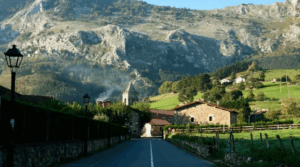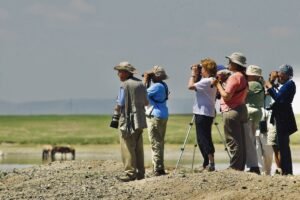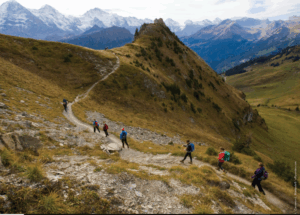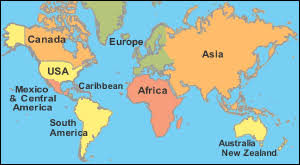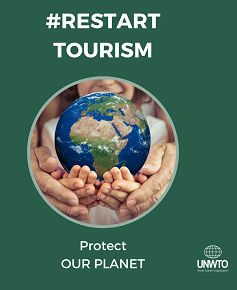Remittance from Nepalese diaspora
– HARI BANSH JHA
Significantly, the Nepalese diaspora has emerged quite strong in the last couple of years both in terms of the quantity and quality. Of Nepal’s total population of nearly 30 million, more than 3 million non-resident Nepalese live in 115 countries other than India. Most importantly, their purchasing power is 2.5 fold of the total budget of the Nepalese government. The Nepalese diaspora is estimated to be generating nearly US$3 billion worth of remittance each year. Without any government support, the remittance has been able to bring incalculable transformation in Nepal’s social and economic structure in all the three regions of the country – the Terai, hills and the mountain.
The flow of remittance in Nepal began to increase remarkably when the youth force were forced to leave the country for foreign employment with a view to escaping the decade-long conflict. As much as 30 per cent of the households in the country receive remittance, which is one of the major factors in the reduction of poverty from 42 per cent to 31 per cent between 1996 and 2005 and recently to 25 per cent. In this regard, it is important that Non Resident Nepali Association (NRNA) has offered to make an investment in Nepal in a wide range of areas like hydro-power projects, tourism industry, education and different manufacturing units. Over the past years, Nepal lost a great opportunity of utilizing the resources of its diaspora for the lack of adequate plans and programmes, laws and export processing zones.
Unfortunately, foreign investment is still regarded as an extension of imperialist exploitation of the people. Importance of overseas Nepalese for the modernization of Nepal is yet to be understood. There is hardly any mechanism to pursue the diaspora to make contribution for their homeland. There is no special cabinet ministry to deal with them. There is no provision to help the them and their families back home in Nepal.
On the other hand, in Nepal’s neighbourhood China has successfully mobilized the resources of its diaspora for the development of the country. The number of the overseas Chinese is 55 million and they account for 70 per cent of the total foreign direct investment of the country. Unlike the overseas Chinese, the Indian diaspora were the late comers. The number of Indian diaspora is 20 million or so and they are smaller in size as compared to the Chinese diaspora. Yet the Indian diaspora have been able to contribute nearly 10 per cent of the total foreign direct investment into their country. What is important about the Chinese and Indian diaspora is that they did not make investment in their countries on their own. In fact, this was the outcome of the strong dose of economic development strategies and incentives given to them.
However, the role of the diaspora should not only be assessed on the basis of resources that they are able to bring to their homeland. It should not be forgotten that quite often they play significant role in promoting the interest of their homeland in foreign countries. For example, the Indian diaspora work even as advocacy group in USA. They have become quite influential in this country on account of their growing clout in national economy, politics and even cultural sphere. For some of these reasons, it was difficult for the US government to impose or continue imposing sanctions against India when it made a nuclear explosion in 1998.
Hence, it was not without reason why the Indian Government established Ministry of Overseas Indian Affairs (MoIA) in May 2004.
Learning lessons from world’s two fast growing economies, India and China, Nepal should no more be shy in using the financial resources and the talents of the Nepalese diaspora. For this purpose, the Nepalese government and stakeholders in the country should take initiative to pass preferential laws to facilitate the flow of resources from the diaspora for which a new Ministry of Overseas Nepalese Affairs could be set up. The Ministry might develop plans for using the Nepalese diaspora to promote the country’s interest abroad in economic, political and cultural fields.
It may also be appropriate to allow the non-resident Nepalese to continue to hold their right to citizenship in order to keep their links with the motherland intact. Patriotic appeals can be made to attract the diaspora for making investment in Nepal. Proper organizational network could be made to help the returned overseas Nepalese and their family members back home.
Besides, the diaspora should be allowed to enjoy national treatment on the investment made by them in Nepal and due compensation paid to them if their investment projects are affected due to war, armed conflict, riots, insurrection or the state of emergency. Nepal has signed such kind of agreement as Bilateral Investment Promotion and Protection Agreement (BIPPA) with India, which is exemplary. There is no reason why BIPPA kind of coverage could not be accorded to investment projects made by the diaspora in Nepal. Last but not the least, Nepal needs to improve governance structure in the country to take advantage from the diaspora, who need to be treated as unofficial ambassadors for their potential role in promoting economic, political and cultural interest of the country in the host country.


